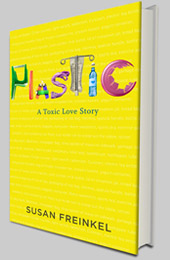Plastic has long been a balkanized industry, fraught with internecine rivalries. For years, there was bad blood between the industry’s two biggest trade groups, the Society for the Plastics Industry (SPI) and the American Chemistry Council (ACC). But there’s nothing like shared adversity to bring old rivals together. In the face of growing public agitation about various plastic-related issues, the SPI, the ACC and the Canadian Plastics Industry Association are now forming a united front. Their new group, the North American Plastics Alliance will “help the industry speak with a single voice in North America,” according to a report in Plastics News. (For now, that voice doesn’t include the Mexican industry, but ACC vice president for plastics, Steve Russell, said that eventually the Alliance will bring in other associations, including representatives from Mexico.)
As PN reporter Mike Verespej notes, the alliance comes at time when the industry is facing challenges on many fronts. Anti-bag measures continue to be introduced: some 22 US communities have banned them and two — Washington, D.C. and Montgomery County, MD — have passed five-cent fees on plastic and paper bags. In California alone, more than three dozen communities have banned polystyrene take-out containers. Nine states have banned bisphenol A from baby bottles, as have Canada, Europe and Beijing; Canada also has declared the chemical a toxic substance.
Misery loves company. According to Verespej. the new Alliance will focus on managing its misery in four main areas:
1. Advocacy: which presumably means presenting a unified voice and single message on issues such as bag bans or anti-BPA measures. This could increase the industry’s political clout and presumably allow development of a bigger warchest than any of the individual groups can muster individually.
2. Energy recovery: Given the low recycling rates of plastics and the challenges of recycling many varieties of plastic, increasingly the industry is pushing for waste-to-energy technology as a way to deal with plastic trash. It’s interesting to see that this is high on the new alliance’s agenda.
3. Pellet containment: Encouraging companies to take measures to prevent pre-production pellets from escaping into the environment. The U.S., and more recently Canada, already have a pellet containment program, Operation Clean Sweep, which has been effective where and when it’s implemented. Unfortunately, it remains voluntary.
4. “Initiatives aimed at getting key stakeholders to look more favorably on plastics,” in Verespej’s words, which I assume refers to PR campaigns like the ACC’s recent sponsorship of art exhibits and fashion shows with the message that “plastic is the new black.”
What’s not on the list: Increased support or investment in recycling infrastructures; Support of research into the health and environmental safety of chemicals used in plastics or as additives; Promotion of development of biodegradable plastics; Support of litter abatement initiatives; Research into marine debris.
In short, aside from the pellet containment program — which remains purely voluntary — the new alliance doesn’t seem any more interested in taking real responsibility for the impact of plastics on health and the environment than its individual member groups. And now legislators, policy-makers, activists and others grappling with problems posed by plastics will have to contend with an even stronger opposition.



